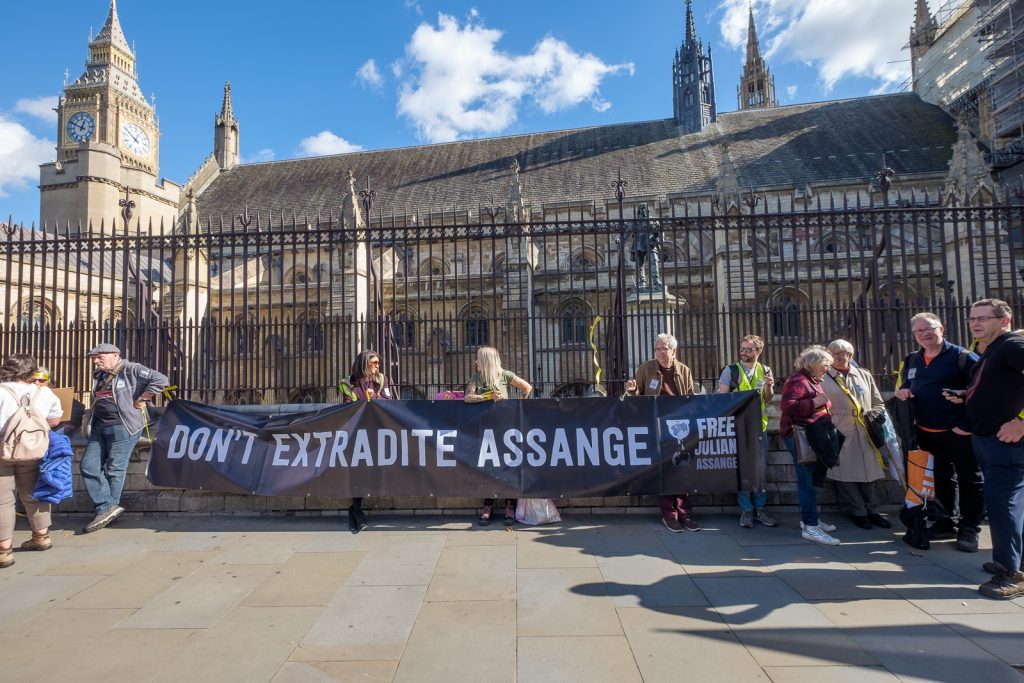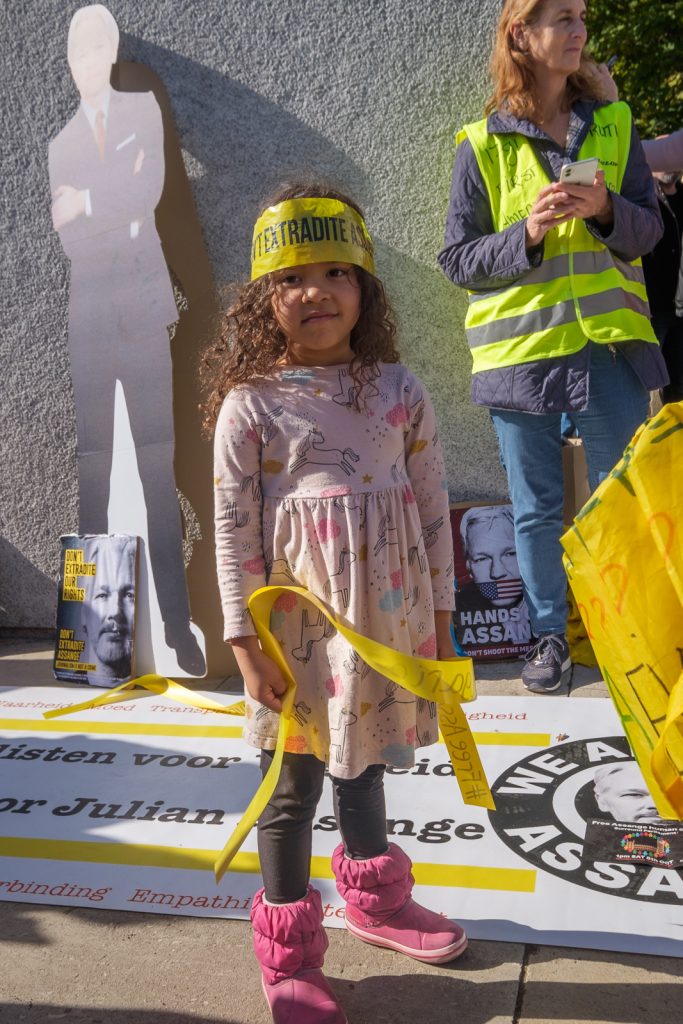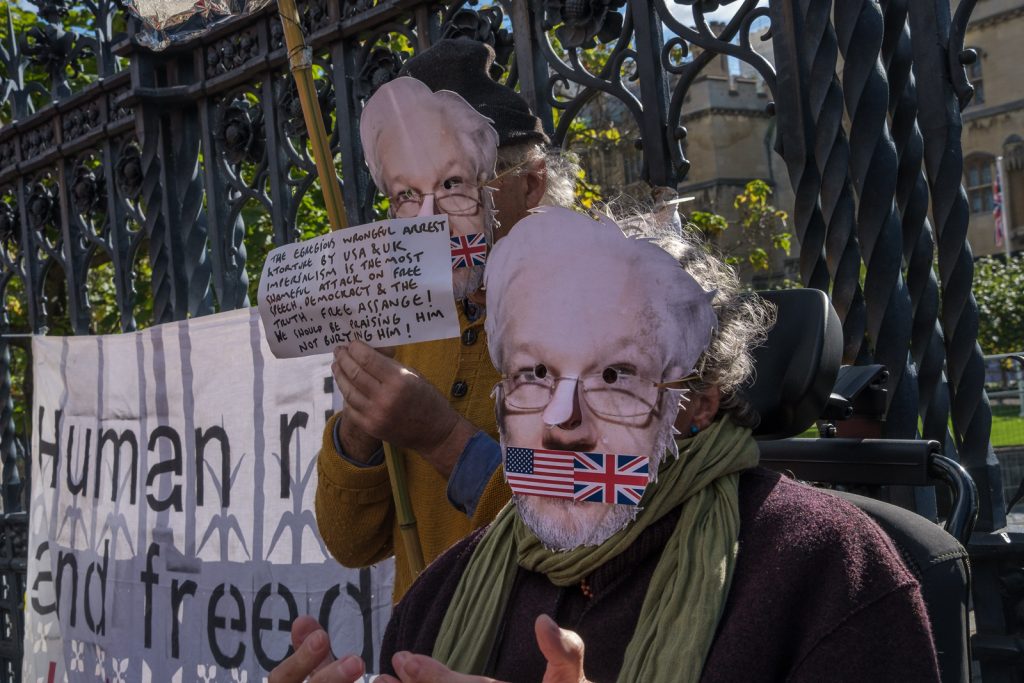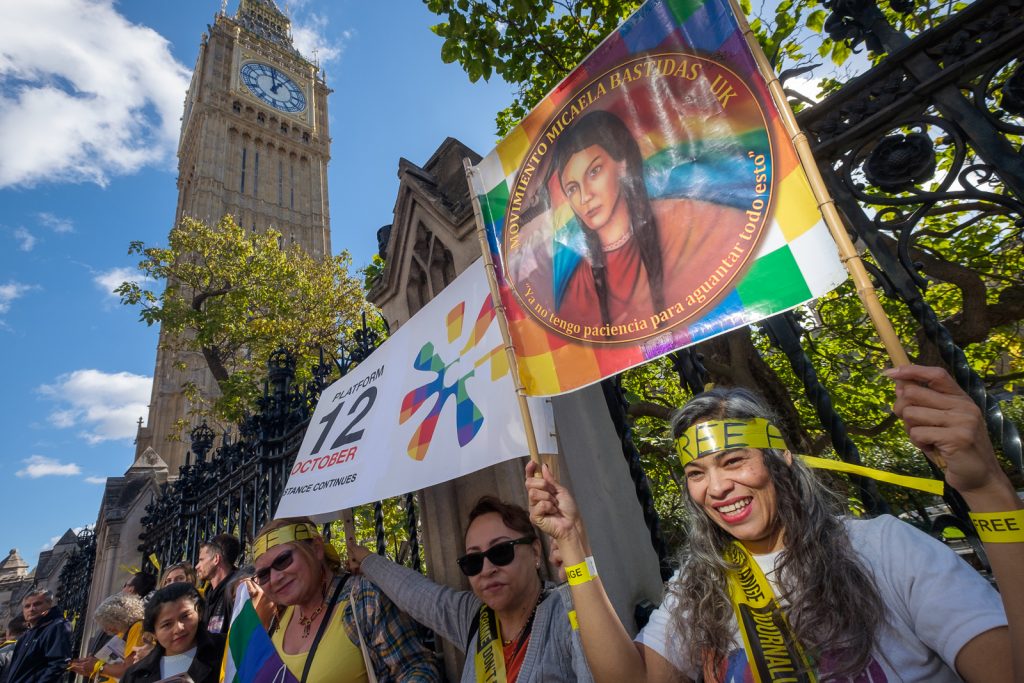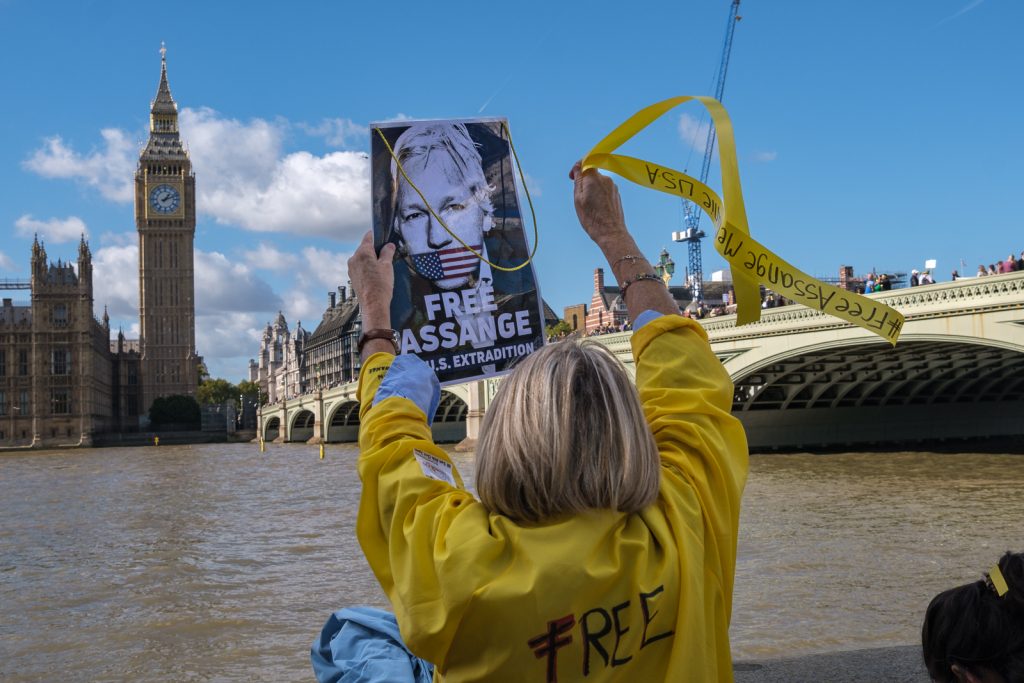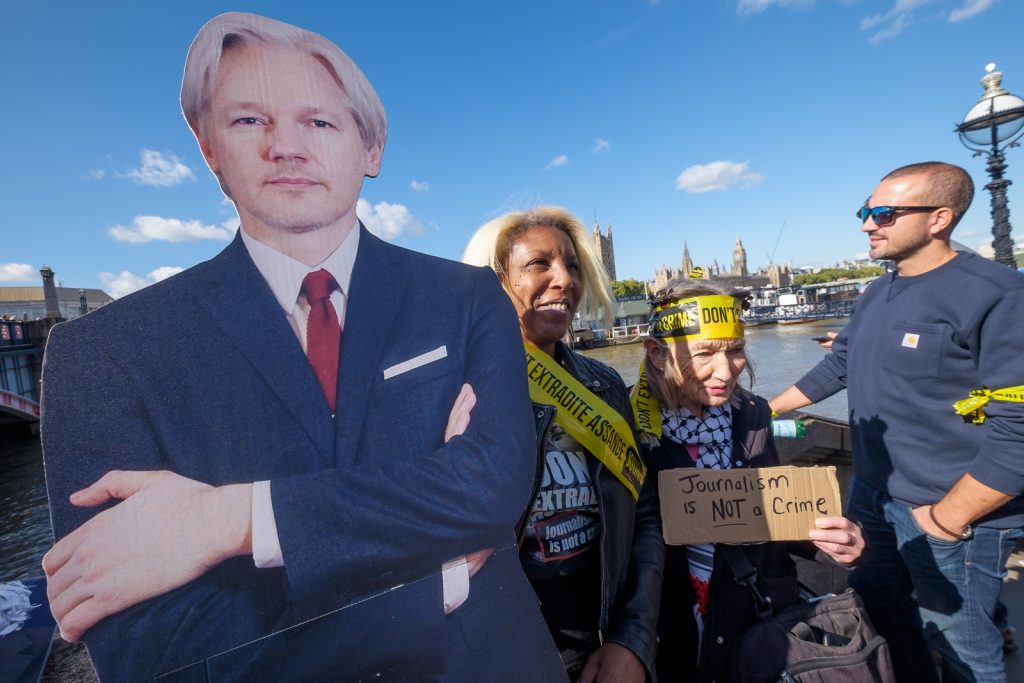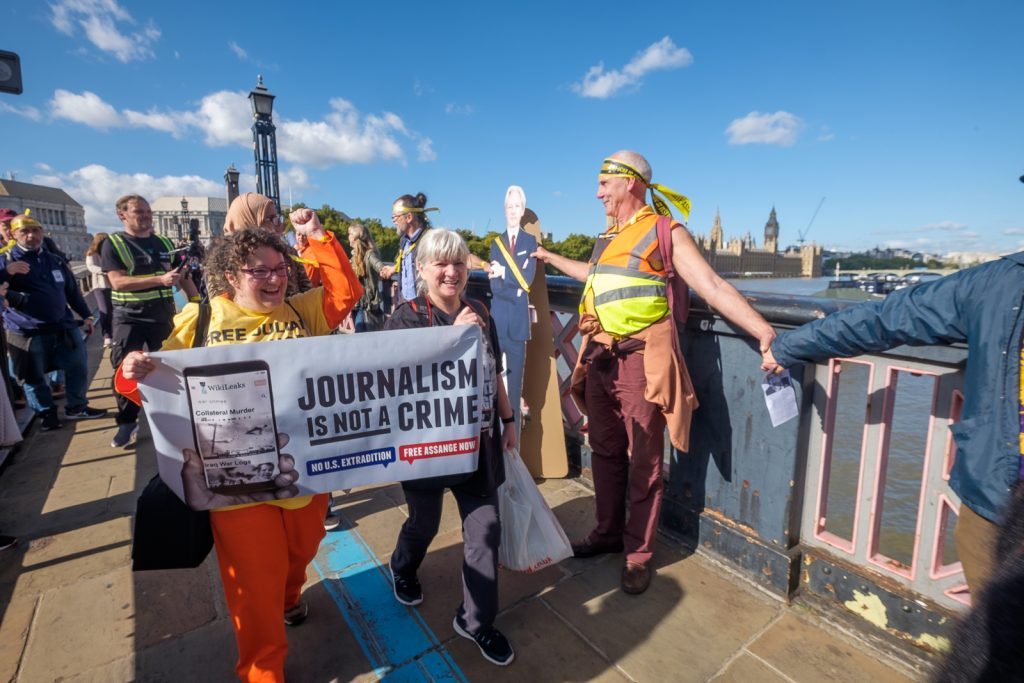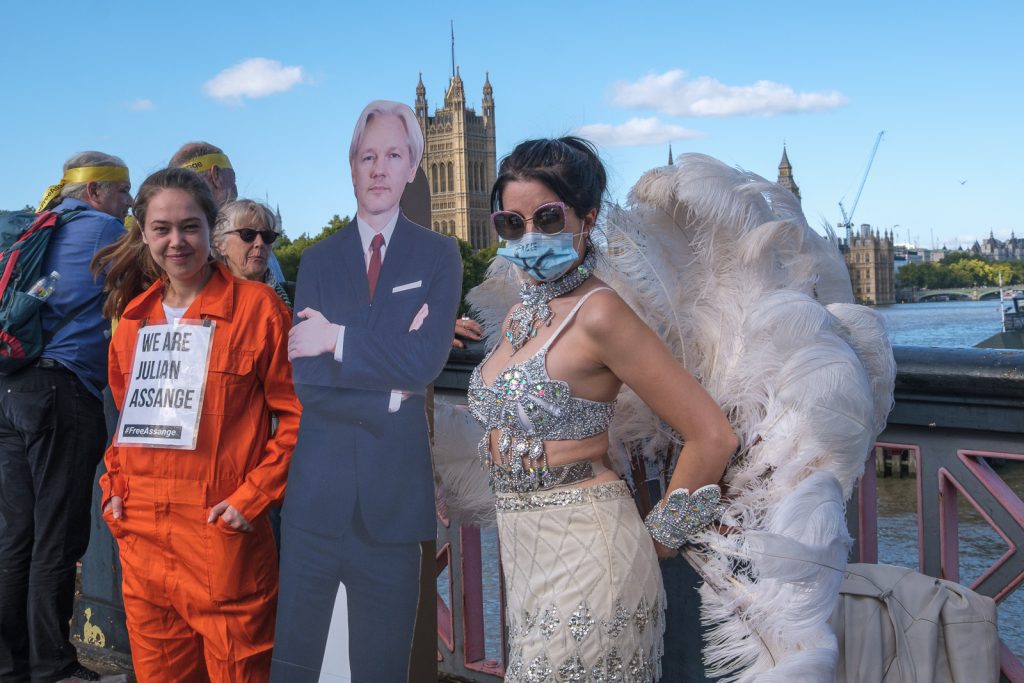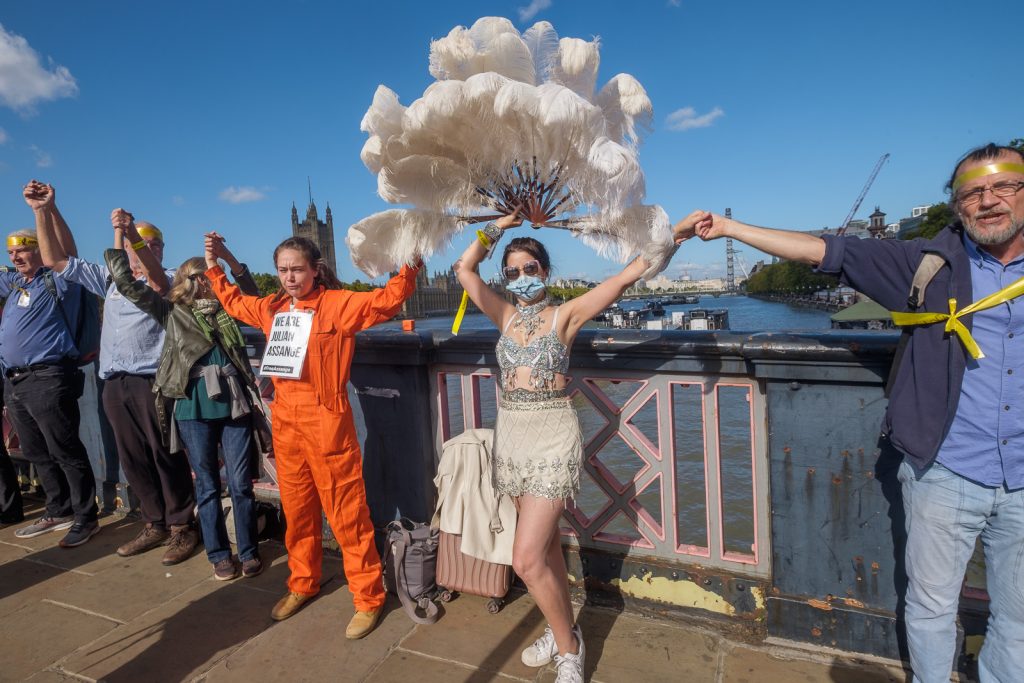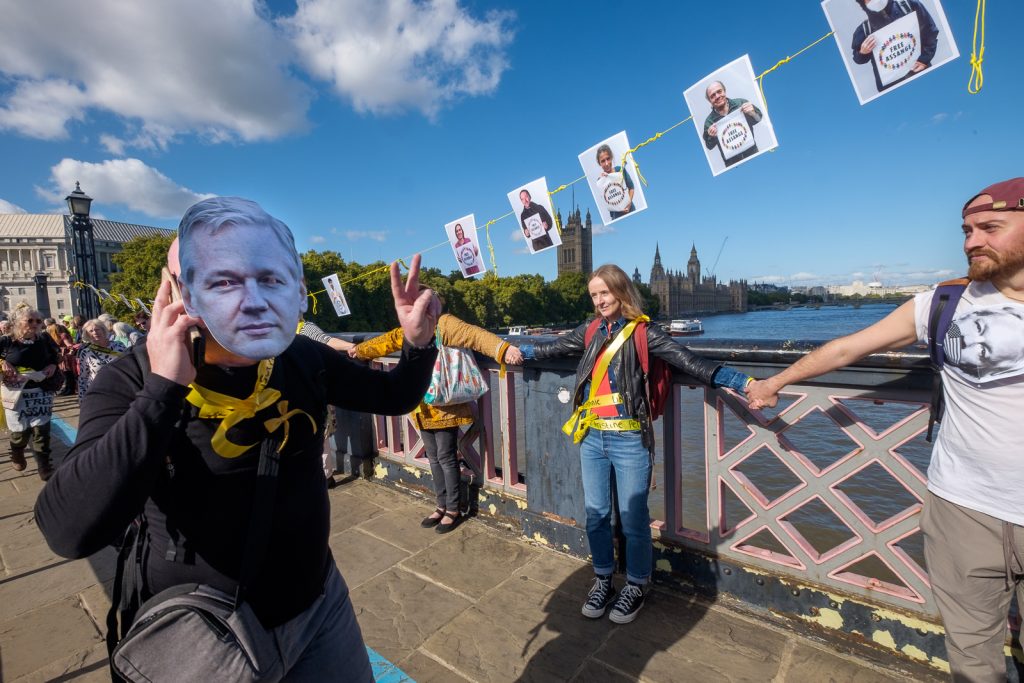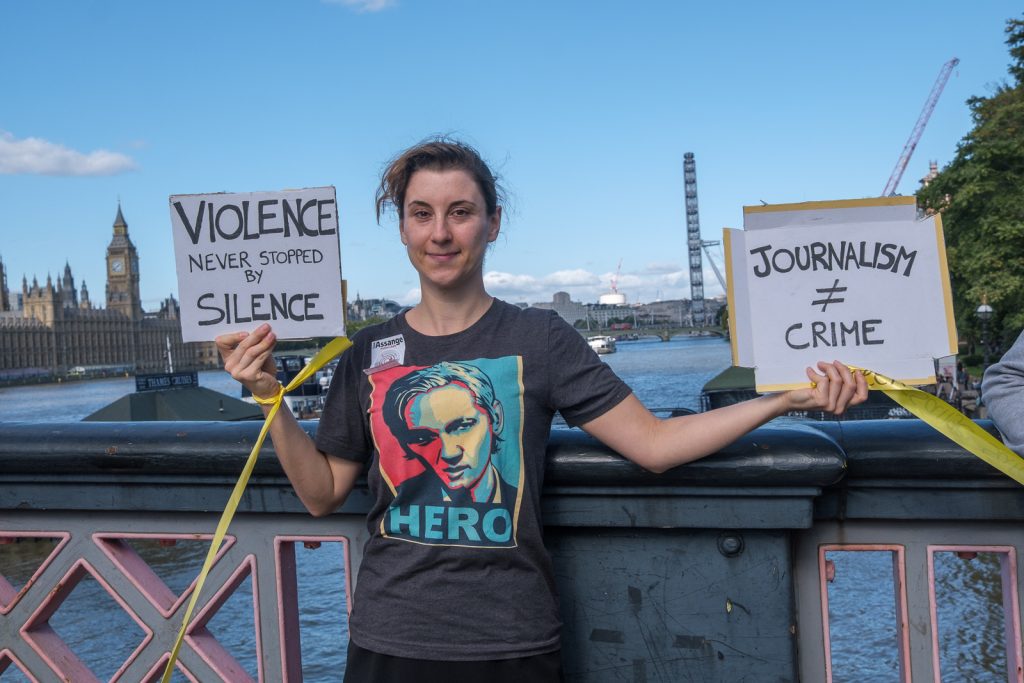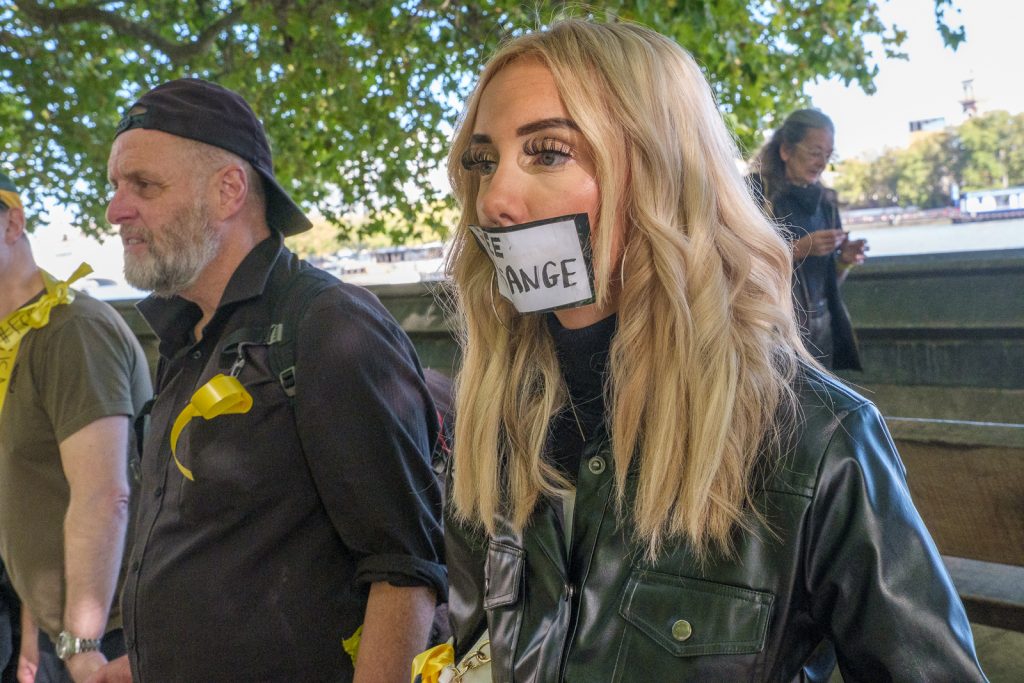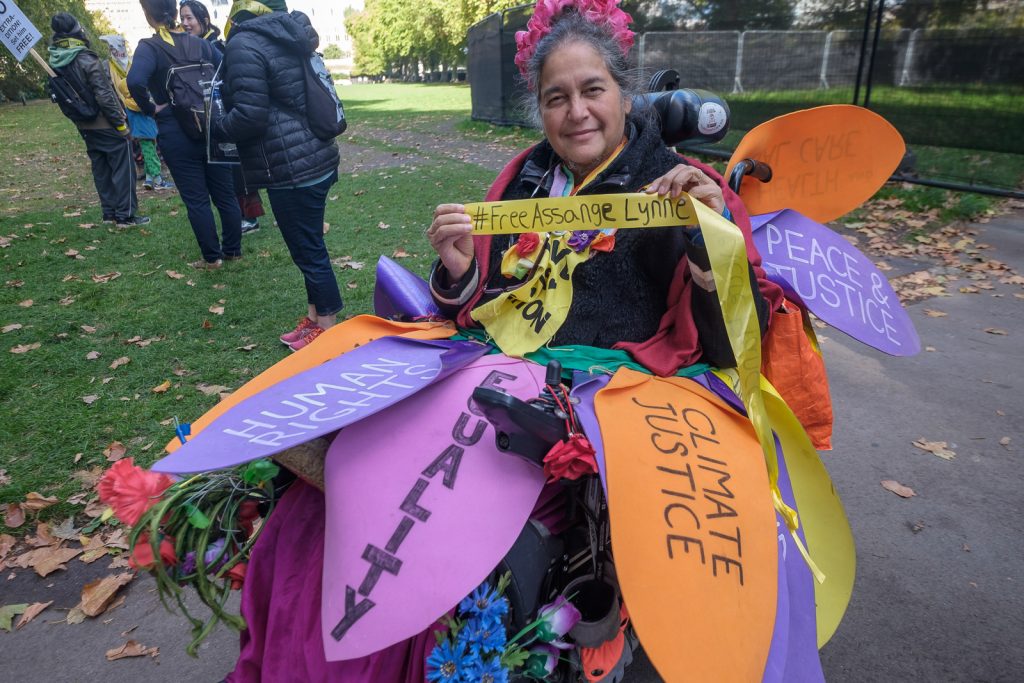‘Tommy Robinson’ & Poland: Five years ago today, Saturday 24th August 2019 I covered two protests in London against the extreme right. Anti-fascists opposed a protest outside the BBC after far-right activist Stephen Christopher Yaxley-Lennon, better known as Tommy Robinson was jailed for violating a court order, and there was a protest at the Polish Embassy in solidarity with LGBTQ+ people in Poland whose lives are under threat from the right-wing Law & Justice Party and the Catholic Church.
Anti-fascists outnumber ‘Free Tommy’ Protest
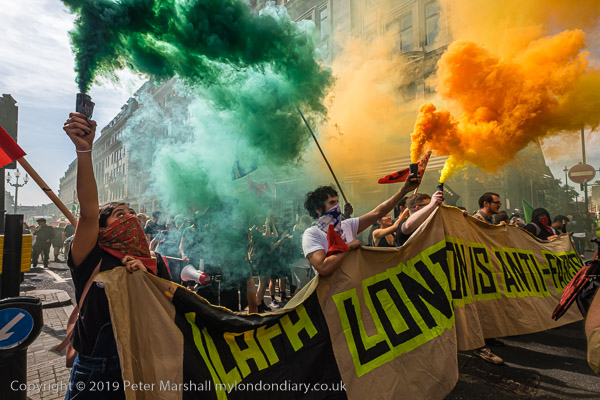
Robinson was sentenced to 9 months for 3 offences outside Leeds Crown Court which could have led to the collapse of a grooming gang trial, and has previous convictions for violence, financial and immigration frauds, drug possession and public order offences.
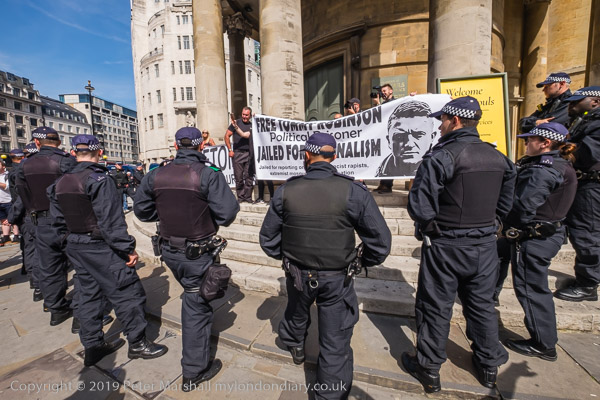
The claim by his supporters that he was imprisoned for ‘journalism’ and in some way is a defender of free speech is simply ludicrous. He knew he was breaking the law and pleaded guilty.
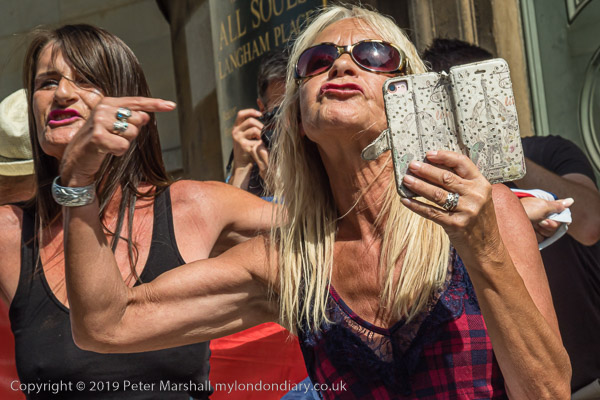
All journalists know that they have both rights and responsibilities and we are governed by the laws of the country, particularly with respect to the publication of material. Good journalists often publish material that some people would not want published, citing the public interest in doing so, but in this case Robinson’s actions were clearly against any public interest and could have led to a serious criminal prosecution having to be abandoned.
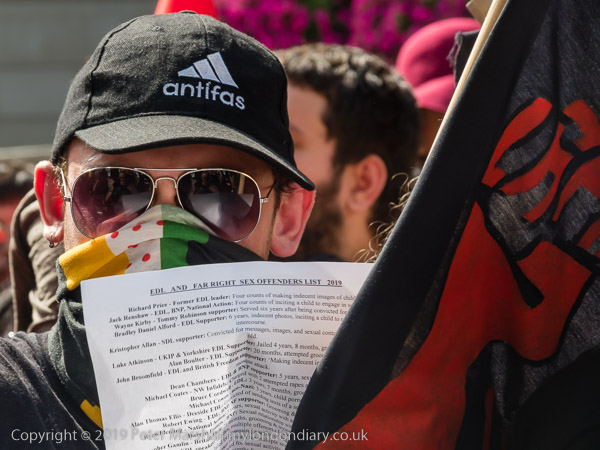
Two groups of protesters came to oppose the protest outside the BBC by Robinson supporters. I met the London Anti-Fascist Assembly and others at Oxford Circus and accompanied them as they marched up Regent Street towards the BBC.

Police marched with them too, and stopped them a few yards from the Robinson protest. When we arrived there were only a handful of ‘Free Tommy’ supporters waiting on the steps of All Souls Langham Place. They shouted back as the Anti-Fascists shoted at them and a police officer warned one of the women about her language as the police moved the Anti-Fascists back to the other side of the road

After some considerably shouting at the extreme right they were pushed by police into a pen on the opposite side of the road. Here they continued to shout at the extreme right protesters and a long list of EDL and Far Right convicted sex offenders was handed out.

Shortly after a large group of Stand Up to Racism supporters arrived to stand beside the Antifa protesters. A couple of police horses came as well as a few more Free Tommy supporters who had marched from Trafalgar Square protected by a police escort.

But theirs was still a small protest, greatly outnumbered by those opposed to them.

The stand-off shouting match continued, with police largely keeping the two groups apart. I left for 45 minutes to cover another protest, and returned to find little had changed, but saw one anti-fascist being led away to a police van after being arrested for refusing to get off the road when ordered by police.
More pictures on My London Diary at Anti-fascists outnumber Protest for ‘Tommy’.
Solidarity with Polish LGBTQ+ community – Polish Embassy
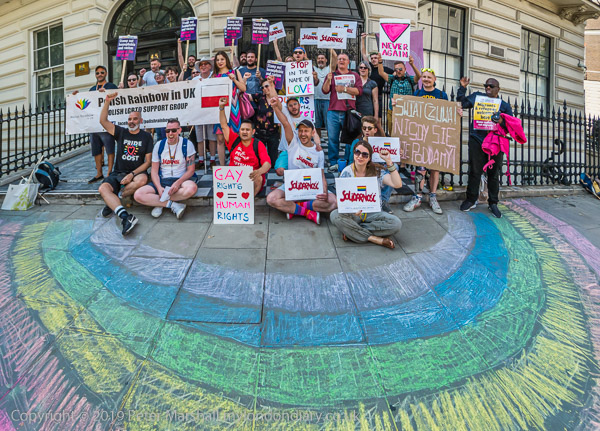
Conveniently the Polish Embassy where protesters had gathered to show solidarity the LGBTQ+ community in Poland is only a few minutes walk from the BBC
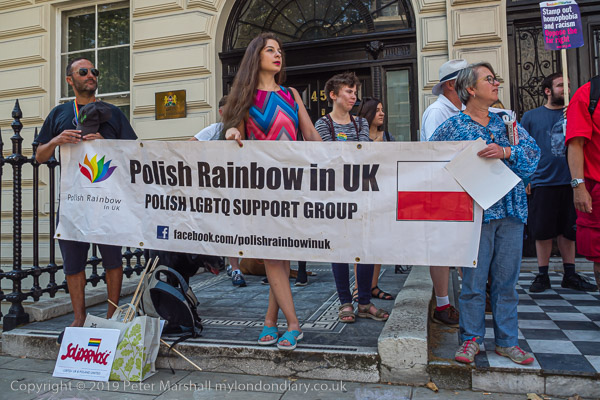
LGBTQ+ people in Poland are currently living in fear, their lives threatened under the rule of the right-wing Law & Justice Party which together with the Catholic Church have accused them of being a threat to children and to Poland itself.
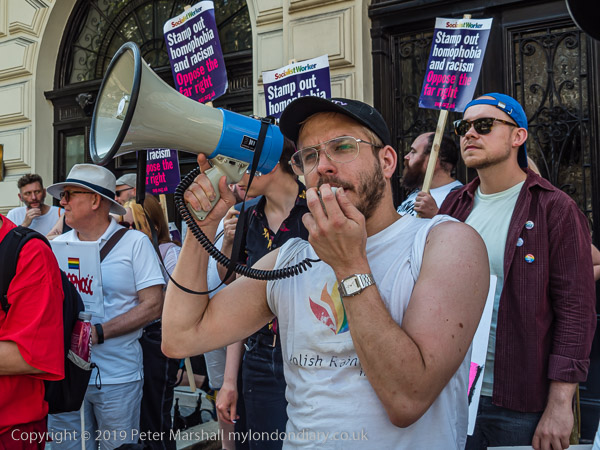
Some local authorities have declared ‘LGBT Free Zones’ and nationalists groups have actively attacked members of the LGBTQ+ community and Pride events.
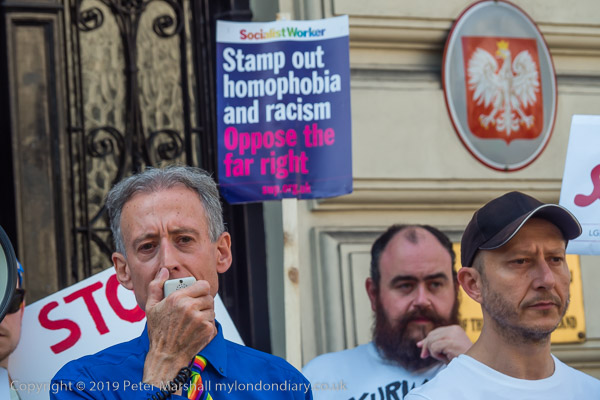
Among those who came to speak at the rally alongside Polish gay rights activists were Nicola Field of Lesbians and Gays Support The Miners, Peter Tatchell and Weyman Bennett of Stand Up to Racism
Solidarity with Polish LGBTQ+ community
Flickr – Facebook – My London Diary – Hull Photos – Lea Valley – Paris
London’s Industrial Heritage – London Photos
All photographs on this page are copyright © Peter Marshall.
Contact me to buy prints or licence to reproduce.
